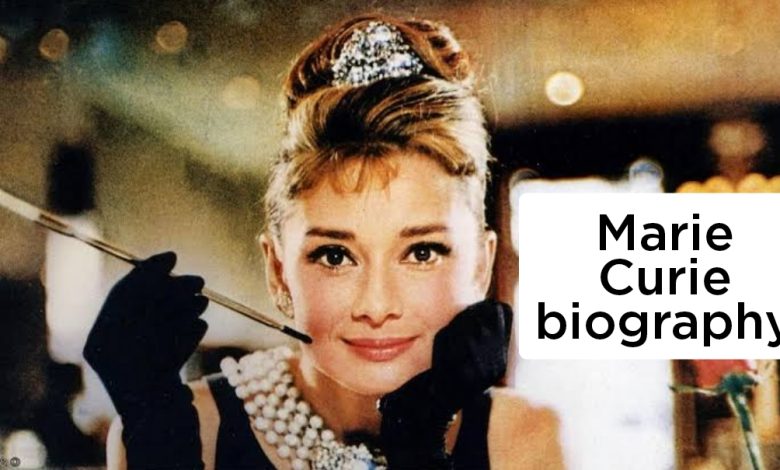Marie Curie: Pioneering Scientist and Double Nobel Laureate
Marie Curie biography

Marie Skłodowska Curie, a name that resonates with scientific brilliance and groundbreaking discoveries, was a physicist and chemist who conducted pioneering research on radioactivity. Her work not only revolutionized our understanding of radiation but also paved the way for its application in medicine. As the first woman to win a Nobel Prize and the only person to win Nobel Prizes in two scientific fields, Marie Curie’s life story is one of perseverance, dedication, and remarkable achievement in the face of significant obstacles.
Early Life and Education
Born on November 7, 1867, in Warsaw, Poland (then part of the Russian Empire), Maria Skłodowska was the youngest of five children in a family that valued education. Her parents were teachers, and despite the challenging political climate under Russian occupation, they instilled in their children a love for learning and Polish culture.
Marie’s early life was marked by tragedy. She lost her mother to tuberculosis when she was only 10 years old, and her sister Zofia died from typhus two years later. Despite these hardships, Marie excelled in her studies, graduating from high school at 15 with the highest honors.
However, pursuing higher education was not easy for women in Poland at that time. Marie and her sister Bronisława made a pact: Marie would work as a governess to support Bronisława’s medical studies in Paris, and then Bronisława would do the same for Marie. This arrangement allowed Marie to eventually move to Paris in 1891 to study physics and mathematics at the Sorbonne.
Scientific Career and Discoveries
In Paris, Marie (now going by the French version of her name, Marie) threw herself into her studies with characteristic intensity. She earned her physics degree in 1893 and a mathematics degree in 1894, both with top honors. It was during this time that she met Pierre Curie, a professor in the School of Physics, whom she would marry in 1895.
Groundbreaking Work on Radioactivity
Marie’s scientific career began in earnest when she decided to investigate the mysterious radiation from uranium salts that had been recently discovered by Henri Becquerel. Her key contributions include:
- Discovering that this radiation came from the atom itself, not from interactions between molecules
- Coining the term “radioactivity” to describe this phenomenon
- Developing techniques for isolating radioactive isotopes
- Discovering two new elements: polonium (named after her native Poland) and radium
Working together, Marie and Pierre Curie studied radioactive materials, particularly pitchblende ore, which was more radioactive than uranium. Their work was physically demanding, requiring them to process tons of ore to produce just a small amount of radium.
Nobel Prizes and Recognition
Marie Curie’s groundbreaking work led to unprecedented recognition in the scientific community:
1903 Nobel Prize in Physics
Marie, along with Pierre Curie and Henri Becquerel, was awarded the Nobel Prize in Physics for their work on radioactivity. This made Marie the first woman to win a Nobel Prize.
1911 Nobel Prize in Chemistry
Marie won her second Nobel Prize, this time in Chemistry, for her discovery of radium and polonium, and her work in isolating radium. This made her the first person to win Nobel Prizes in two different scientific fields.
Despite these accolades, Marie faced significant challenges as a woman in science. She was denied membership to the French Academy of Sciences in 1911, a decision widely believed to be due to gender bias.
Personal Life and Challenges
Marie’s personal life was marked by both joy and tragedy. Her partnership with Pierre was both romantic and intellectual, but it was cut short when Pierre died in a street accident in 1906. Despite her grief, Marie took over his teaching position at the Sorbonne, becoming the first woman to teach there.
In 1911, Marie became embroiled in a scandal when her relationship with physicist Paul Langevin, a former student of Pierre’s, became public. The press attacked her viciously, with xenophobic and sexist overtones. Despite this, Marie remained focused on her work.
World War I and the Petit Curies
During World War I, Marie Curie saw an opportunity to use her knowledge to help the war effort. She developed mobile radiography units, nicknamed “petite Curies,” to provide X-ray services to wounded soldiers at the front lines. She trained 150 women as operators and even drove the vehicles to the front herself, often with her daughter Irène.
Later Years and Legacy
In her later years, Marie Curie continued her research and became a prominent figure in the international scientific community. She traveled widely, including a trip to the United States where she received a gift of one gram of radium for her research, valued at $100,000 at the time.
Marie’s dedication to science came at a personal cost. Years of exposure to radiation, whose dangers were not fully understood at the time, took a toll on her health. She died on July 4, 1934, from aplastic anemia, likely caused by radiation exposure.
Marie Curie’s legacy extends far beyond her scientific discoveries:
- She paved the way for women in science, inspiring generations of female scientists
- Her work laid the foundation for many modern cancer treatments
- The element curium was named in honor of Marie and Pierre Curie
- The Curie Institute in Paris, which she founded, remains a major cancer research facility
- Her daughter Irène Joliot-Curie followed in her footsteps, winning a Nobel Prize in Chemistry in 1935
Conclusion
Marie Curie’s life story is one of extraordinary dedication to science and the pursuit of knowledge. Despite facing significant obstacles as a woman in a male-dominated field, and as an immigrant in France, she persevered to become one of the most renowned scientists in history. Her discoveries revolutionized our understanding of radioactivity and opened up new fields of study in physics and chemistry.
More than just a brilliant scientist, Marie Curie was a pioneer who broke barriers for women in academia and science. Her commitment to her work, even in the face of personal tragedy and public scandal, serves as an inspiration to scientists and non-scientists alike. Marie Curie’s legacy continues to influence scientific research and inspire those who face adversity in pursuit of their goals.
